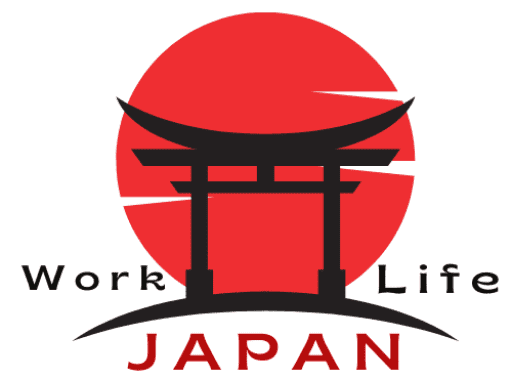East Asia Travel Destinations are some of the most captivating places on the planet. From the neon-lit streets of Tokyo to the ancient wonders of the Great Wall in China, each location provides its own unique tapestry of culture, food, nature, and modern excitement. In this comprehensive guide, we’ll compare Japan, South Korea, China, Taiwan, and Macau + Hong Kong. Read on to discover which of these East Asia Travel Destinations will fit your travel style best!
Why Explore East Asia Travel Destinations?
East Asia’s charm lies in its deep historical roots, cutting-edge technologies, mouthwatering cuisine, and breathtaking scenery. Whether you’re planning your very first trip to the region or seeking a fresh travel perspective, these countries and territories deliver a blend of traditional charm and modern attractions that captivate visitors year-round.
- Rich Cultural Heritage – East Asian civilizations boast millennia of recorded history, visible in their temples, palaces, and ancient customs.
- Innovative Modern Lifestyle – From high-speed trains to futuristic urban landscapes, East Asia leads the world in modern infrastructure.
- Diverse Natural Landscapes – Each destination features spectacular natural wonders—volcanic islands, soaring mountains, pristine beaches—that promise awe-inspiring experiences.
- Varied Culinary Scenes – The region’s cuisines range from comforting street food to high-end dining, ensuring gastronomic adventures for every preference.
For more tips and inspiration on planning your journey, check out Visit Japan Web for official guidelines and this helpful post on travel itineraries around Tokyo.
1. Cultural & Historical Highlights in East Asia Travel Destinations
Cultural immersion is often the highlight of exploring East Asia Travel Destinations. Each location holds treasures for history buffs, tradition seekers, and architecture enthusiasts.
Japan
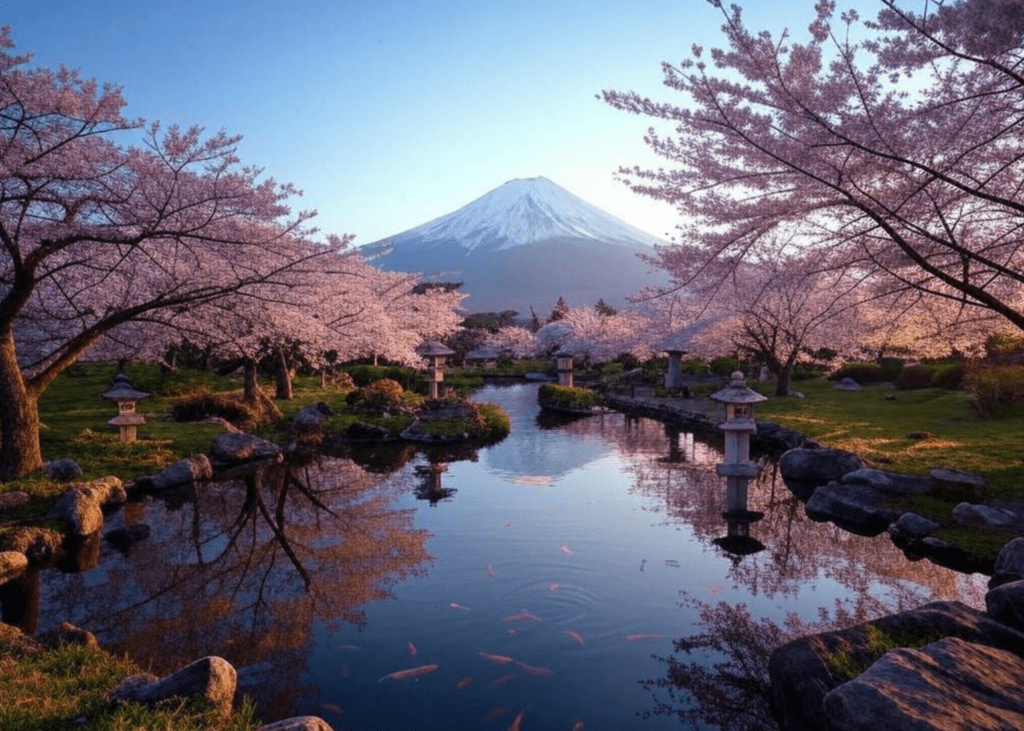
- Notable Historic Sites: Kyoto’s Fushimi Inari Shrine (thousands of vermilion torii gates), Nara’s Todai-ji Temple (home to the Great Buddha), Hiroshima’s Peace Memorial Park.
- Cultural Experience: Tea ceremonies, kimono rentals, samurai lore, and visits to traditional ryokan (Japanese inns).
- Extra Insight: Japan’s emphasis on preserving heritage is evident in centuries-old traditions like kabuki theater and sumo wrestling.
For additional historical context, check out UNESCO World Heritage Listings in Japan.
South Korea
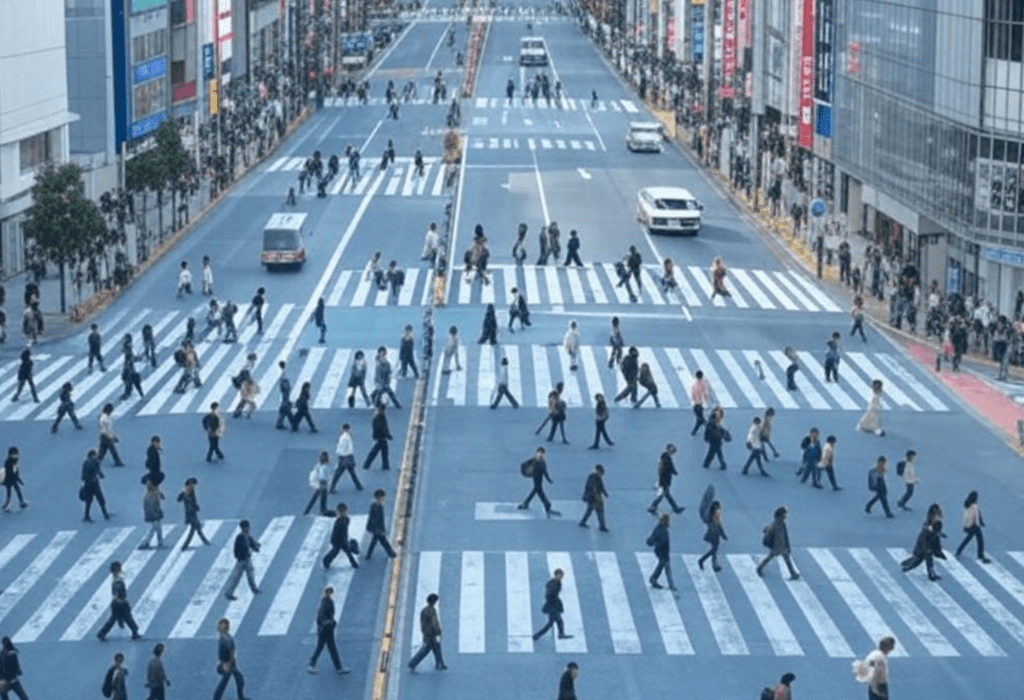
- Iconic Heritage Sites: Gyeongbokgung Palace in Seoul (Joseon Dynasty’s main palace), Bulguksa Temple in Gyeongju (8th-century Buddhist temple), DMZ tours (insight into Korean geopolitical history).
- Cultural Experience: Traditional hanbok rentals, K-pop music scene, centuries-old Confucian practices, and kimchi-making classes.
- Extra Insight: Experience a unique blend of Confucian heritage, contemporary pop culture, and a strong sense of national identity.
For more historical attractions, visit the Korea Tourism Organization site.
China
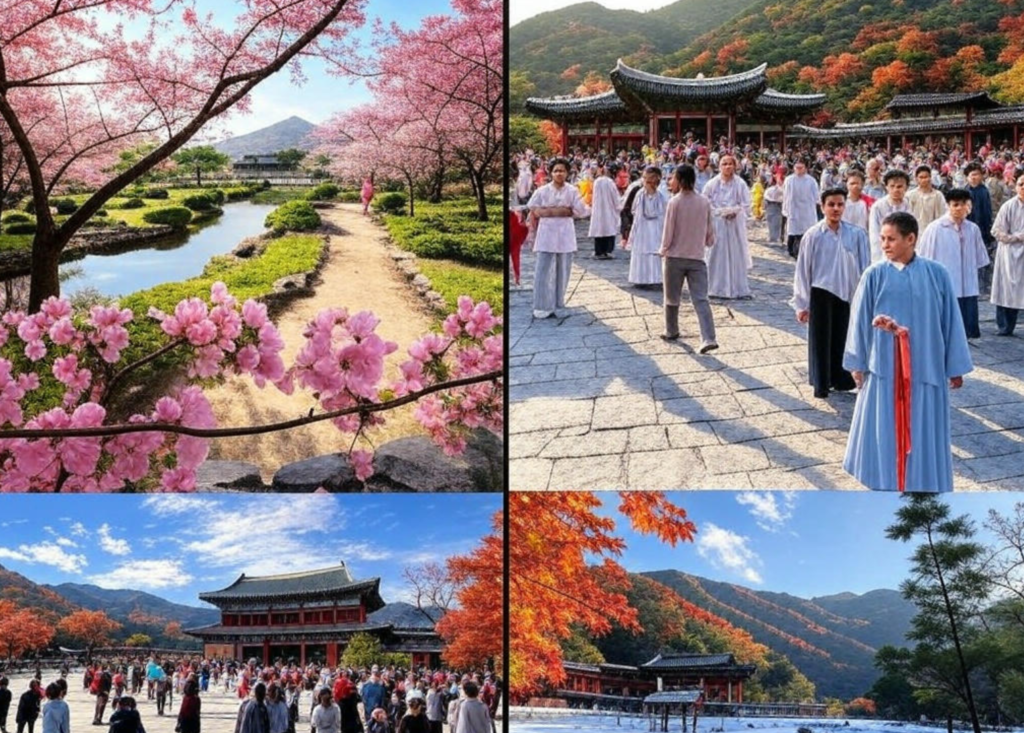
- World-Famous Landmarks: The Great Wall (spanning over 21,000 km), the Forbidden City in Beijing, the Terracotta Army in Xi’an.
- Cultural Experience: Marvel at imperial dynasties’ legacies, bustling hutongs, and diverse folklore spanning Han, Tibetan, Uyghur, and other ethnic groups.
- Extra Insight: China’s scale is immense, offering an unmatched variety of historical and cultural touchpoints—though language barriers may require extra planning.
Learn more about Chinese culture at China Highlights.
Taiwan
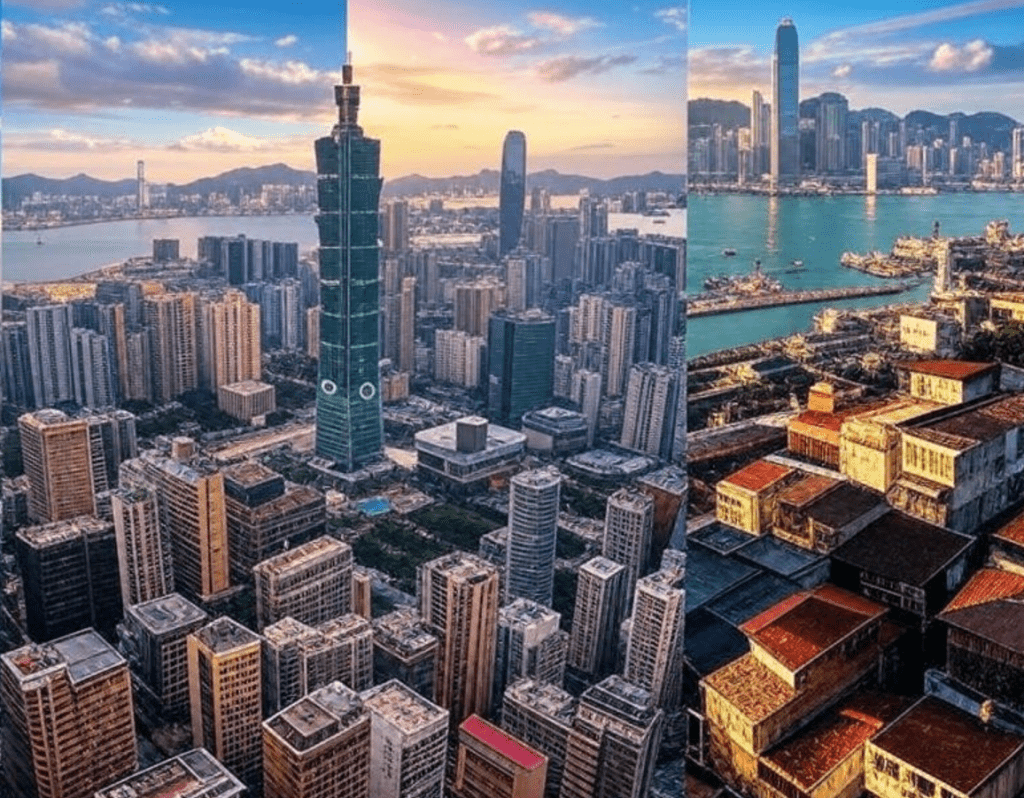
- Historic Influences: Blend of Chinese heritage, Japanese colonial history, and indigenous traditions.
- Key Spots: Chiang Kai-shek Memorial Hall in Taipei, Jiufen Old Street’s lantern-lit alleys, Tainan’s centuries-old forts.
- Extra Insight: Taiwan’s diverse cultural fabric is especially noticeable in its temples and festivals that seamlessly merge Confucian, Taoist, and folk beliefs.
Check out Taiwan’s Tourism Bureau for events and cultural programs.
Macau + Hong Kong
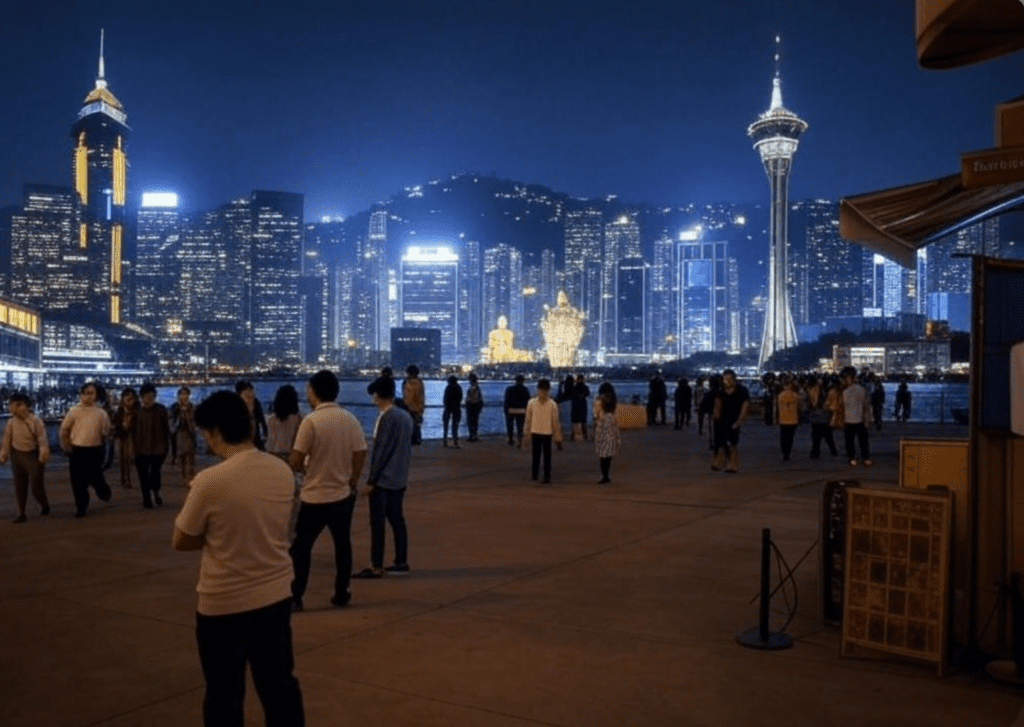
- Macau: Portuguese colonial legacy, Ruins of St. Paul’s, and Senado Square reflect a cultural fusion unique in Asia.
- Hong Kong: British colonial heritage, Big Buddha (Tian Tan Buddha), Man Mo Temple’s incense coils, and historical buildings near Victoria Harbour.
- Extra Insight: Both Macau and Hong Kong balance Western and Eastern traditions, creating cultural melting pots known for their international vibe.
Look up Hong Kong Tourism Board for updated cultural spots and exhibits.
Top Picks for Culture-Lovers
- China (grand scale, ancient wonders)
- Japan (deeply preserved customs and samurai heritage)
- South Korea (mix of tradition and modern pop culture)
For more deep dives, see this cultural comparison post on discovering East Asia’s history.
2. Natural Scenery Across East Asia Travel Destinations
Exploring East Asia Travel Destinations isn’t complete without witnessing the stunning landscapes—where nature often coexists with bustling urban environments.
Japan
- Highlights: Mount Fuji for iconic views, cherry blossom season across Kyoto, winter wonderland in Hokkaido, tropical beaches in Okinawa.
- Best Seasons: Spring (cherry blossoms) and autumn (fiery foliage) are especially scenic, but don’t overlook summer festivals and winter illuminations.
- Outdoor Activities: Hiking Mt. Fuji (July–September), skiing in Niseko, and snorkeling in Okinawa’s clear waters.
South Korea
- Highlights: Jeju Island’s volcanic landscapes (Mount Hallasan), Seoraksan National Park’s dramatic peaks, spring blossoms in Busan, autumn foliage in Nami Island.
- Outdoor Activities: Hiking is hugely popular—Seoraksan trails are famed for their vistas, and Jeju’s Olle Trails offer coastal panoramas.
- Tip: Consider scheduling your trip during spring or fall to avoid extreme summer heat or winter chill.
China
- Highlights: Zhangjiajie’s breathtaking stone pillars (inspiration for the movie “Avatar”), Guilin’s picturesque karst mountains, Jiuzhaigou’s crystal lakes in Sichuan.
- Outdoor Activities: Cable car rides over forested peaks, bamboo rafting in Yangshuo, scenic boat cruises along the Li River.
- Note: China’s vast size means climates vary greatly—pack accordingly and plan more time for internal travel.
Taiwan
- Highlights: Taroko Gorge’s marble canyons, Sun Moon Lake’s serene waters, Alishan’s sunrise among misty forests.
- Outdoor Activities: Hiking in Taroko National Park, cycling around Sun Moon Lake, enjoying beaches in Kenting for water sports.
- Tip: Taiwan’s sub-tropical climate ensures lush greenery year-round, with mild winters good for exploring mountainous areas.
Macau + Hong Kong
- Highlights: Hong Kong’s Victoria Peak for panoramic cityscapes, Dragon’s Back hiking trail with coastal views, Macau’s lesser-known beaches and rocky shores.
- Urban Nature Balance: Both territories feature modern skylines contrasted with nature-friendly parks and trails.
- Tip: Plan a day trip to Hong Kong’s outlying islands (e.g., Lamma Island or Cheung Chau) to escape the urban bustle.
Top Picks for Nature Enthusiasts
- China (unmatched variety)
- Japan (seasonal beauty and accessible parks)
- Taiwan (spectacular gorge and mountain scenery packed into a smaller area)
Explore more natural wonders with National Geographic’s Asia Travel Guides or read about hiking in Japan’s countryside at this link.
3. Food & Culinary Journeys in East Asia Travel Destinations
For many travelers, food is the ultimate window into a country’s soul. East Asia Travel Destinations boast world-famous cuisines, unique street foods, and traditional meals.
Japan
- Famous Dishes: Sushi, ramen, tempura, wagyu beef, and Osaka’s street food (takoyaki, okonomiyaki).
- Dining Experience: Meticulously prepared meals, emphasis on presentation, izakaya nightlife scene.
- Tip: Book a spot at a sushi counter in Tokyo’s Tsukiji or Toyosu markets for a premium culinary experience.
South Korea
- Famous Dishes: Korean BBQ (samgyeopsal, galbi), kimchi, bibimbap, tteokbokki, fried chicken.
- Street Food Culture: Myeongdong’s vibrant food stalls (hotteok, tornado potato), night markets in Busan.
- Tip: Explore the rise of vegan and vegetarian options in Seoul’s growing health-conscious culinary scene.
China
- Regional Diversity: Peking duck (Beijing), dim sum (Cantonese regions), hot pot (Sichuan and Chongqing), xiaolongbao (Shanghai).
- Local Specialties: Spicy Sichuan cuisine, fresh Cantonese seafood, hearty northern noodles.
- Tip: Street food in cities like Xi’an (Muslim Quarter) or Chengdu’s alleyways is a cultural experience in itself.
Taiwan
- Street Food Heaven: Night markets are legendary—stinky tofu, oyster omelet, beef noodle soup, and bubble tea.
- Dining Vibe: Casual, friendly, with plenty of late-night food stalls.
- Tip: Don’t miss Shilin Night Market in Taipei or Liuhe Night Market in Kaohsiung for an authentic Taiwanese street feast.
Macau + Hong Kong
- Signature Dishes: Dim sum, roast goose, egg tarts (po tat), and Macanese fusion dishes (Portuguese-Asian blend).
- City Chic: Hong Kong’s Michelin-starred eateries in Central and Tsim Sha Tsui, Macau’s upscale buffets in Cotai’s resorts.
- Tip: Swing by Tai O Fishing Village in Hong Kong for fresh seafood. In Macau, make time for the famous Portuguese egg tarts at Lord Stow’s Bakery.
Top Picks for Foodies
- Taiwan (night market mecca)
- China (vast regional variety)
- Japan & South Korea (trendy, globally adored dishes)
For authentic local restaurant recommendations, browse Michelin Guide Asia or see the best ramen spots in Tokyo at this resource.
4. Shopping & Modern Attractions in East Asia Travel Destinations
If you’re a fan of neon cityscapes, luxury malls, or quirky youth culture scenes, East Asia Travel Destinations will not disappoint.
Japan
- Hotspots: Tokyo’s Shibuya Crossing, Harajuku for youth fashion, Akihabara for electronics & anime, Osaka’s Dotonbori.
- Unique Finds: High-quality skincare, artisanal crafts, collectible anime figures.
- Tip: Save receipts for tax-free shopping if you spend over a certain threshold.
South Korea
- Shopping Areas: Myeongdong for K-beauty, Gangnam for luxury brands, Hongdae for indie styles.
- K-Pop & Culture: Pop-up stores featuring idol merchandise, K-beauty clinics, cat cafés, VR arcades.
- Tip: Many major shopping hubs offer free Wi-Fi, making navigating easier with your phone.
China
- Top Urban Hubs: Nanjing Road in Shanghai, Wangfujing in Beijing, Taikoo Li in Chengdu.
- Modern Wonders: Shanghai Tower’s observation deck, futuristic skyline of Pudong, giant LED screens in Guangzhou.
- Tip: Bargaining is common in local markets—polite negotiation can lead to great deals.
Taiwan
- Shopping Districts: Ximending in Taipei (youth culture, street fashion), Taipei 101 mall (luxury brands).
- Modern Tech: Taiwan is a hub for electronics—consider checking out computer malls or camera shops for deals.
- Tip: Taiwan’s major cities are compact, so you can combine sightseeing, food hunts, and shopping sprees in a single day.
Macau + Hong Kong
- Retail Paradise: Tsim Sha Tsui’s designer boutiques, Mong Kok’s lively street markets, Cotai’s high-end malls.
- Skyscraper Views: Hong Kong’s Symphony of Lights across Victoria Harbour, Macau’s Cotai Strip for casino-hotel complexes.
- Tip: Keep an eye out for seasonal sales around Chinese New Year and major holidays.
Best for Shopping & Modern Thrills
- South Korea & Japan (on-trend youth culture and pop phenomena)
- Macau + Hong Kong (luxury brands, iconic skylines)
Find more urban exploration ideas at Time Out Asia or dig into Tokyo’s pop culture scene at this link.
5. Travel Ease & Infrastructure in East Asia Travel Destinations
Planning a trip involves logistics—transportation networks, language, currency, and general accessibility can make or break your travel experience.
Japan
- Pros: World-class public transportation (Shinkansen bullet trains, extensive subway and bus networks), clean and punctual.
- Cons: Accommodation can be pricey in major cities, and English signage varies by region.
- Tip: Purchase a Japan Rail Pass for unlimited Shinkansen travel to maximize sightseeing.
South Korea
- Pros: Advanced subway systems in major cities (Seoul, Busan), well-connected high-speed trains (KTX).
- Cons: English signage is decent in tourist areas, but lesser-known towns may have language barriers.
- Tip: Use T-money or Cashbee cards for seamless public transport across multiple cities.
China
- Pros: Extensive high-speed rail network, cheap domestic flights, robust ride-hailing apps (Didi).
- Cons: Language barriers can be significant, especially outside big cities. Internet usage often requires VPN access for certain apps and websites.
- Tip: Plan routes in advance, and download offline translation tools.
Taiwan
- Pros: User-friendly MRT systems in Taipei and Kaohsiung, YouBike rental for short trips, well-organized tourism info centers.
- Cons: Road signs in English are common, but in rural areas you might need a translation app.
- Tip: Buy an EasyCard for seamless use on MRT, buses, and convenience stores.
Macau + Hong Kong
- Pros: Extremely compact and easy to navigate. Efficient transport (MTR in Hong Kong, free casino shuttles in Macau).
- Cons: Accommodation costs can be high, especially during peak travel seasons.
- Tip: Consider staying outside central areas (like the New Territories in Hong Kong) for more budget-friendly options.
Easiest for Smooth, Stress-Free Travel
Get more infrastructure insights from Lonely Planet or read up on Tokyo train hacks at this post.
6. Budget & Affordability Comparison
One of the biggest questions when exploring East Asia Travel Destinations is the cost. While exact expenses can vary based on travel style, here’s a rough guide:
| Destination | Budget-Friendly? | Average Daily Cost (USD) |
|---|---|---|
| Japan 🇯🇵 | Moderate | $70 – $150 |
| South Korea 🇰🇷 | Affordable | $50 – $120 |
| China 🇨🇳 | Budget-friendly | $40 – $100 |
| Taiwan 🇹🇼 | Affordable | $40 – $80 |
| Macau + Hong Kong 🇲🇴🇭🇰 | Expensive | $80 – $200 |
- Japan: Mid- to high-range expenses, though you can save by opting for business hotels, capsule hotels, or budget airlines like Peach and Jetstar.
- South Korea: Travel costs are generally lower than Japan, with abundant budget eateries, free cultural sites, and moderate accommodation rates.
- China: Offers some of the cheapest food and accommodations if you venture beyond top-tier cities. Transportation via high-speed train is very cost-effective for long distances.
- Taiwan: Known for wallet-friendly street food and reasonably priced public transport. Mid-range hotels and hostels are often good value for money.
- Macau + Hong Kong: Tends to be pricier, especially hotels in central areas. High-end dining and luxury shopping increase average costs.
Best for Tight Budgets
For deals and promotions, try Skyscanner or check this article on saving money in Tokyo.
7. Seasonal Considerations & Best Times to Visit
Travel costs and overall enjoyment can also hinge on when you visit these East Asia Travel Destinations.
- Peak Seasons: Generally spring (March–May) and autumn (September–November) across East Asia, coinciding with cherry blossoms, fall foliage, and pleasant weather. Expect higher prices and bigger crowds.
- Off-Peak Perks: Traveling during winter (December–February) can open doors to winter festivals (Sapporo Snow Festival), less crowded tourist spots, and potential off-season discounts. Summers (June–August) can be hot and humid, but you’ll find more local festivals.
- Major Holidays: Golden Week in Japan (late April–early May), Chinese New Year (varies by lunar calendar, often Jan/Feb), and Chuseok in South Korea (mid-autumn) can affect prices and availability.
Check AccuWeather or official tourism sites for precise seasonal updates. For Japan’s festival calendar, see this post.
Comparison Table: Quick Reference
Below is an additional quick-reference table to help you decide which of these East Asia Travel Destinations aligns best with your interests.
| Criteria | Japan | South Korea | China | Taiwan | Macau + Hong Kong |
|---|---|---|---|---|---|
| Top Cultural Draw | Samurai history, shrines | Royal palaces, K-pop culture | Dynastic wonders, Great Wall | Blend of Chinese & Japanese heritage | East-meets-West colonial heritage |
| Famous Dish | Sushi, ramen | Korean BBQ, bibimbap | Peking duck, hot pot | Beef noodle soup, bubble tea | Dim sum, egg tarts |
| Nature Highlight | Mount Fuji, cherry blossoms | Jeju Island, Seoraksan | Zhangjiajie, Guilin | Taroko Gorge, Alishan sunrise | Victoria Peak, Dragon’s Back trail |
| Urban Icon | Tokyo (Shibuya, Akihabara) | Seoul (Myeongdong, Gangnam) | Shanghai (Bund, Pudong) | Taipei (Ximending, Taipei 101) | Hong Kong (Tsim Sha Tsui), Macau (Cotai) |
| Budget Range | $$ | $$ | $ | $ | $$$ |
(Symbols $ = lower budget, $$ = moderate, $$$ = higher budget)
Conclusion
Choosing among these East Asia Travel Destinations ultimately depends on what resonates most with your travel goals. Are you drawn to centuries-old traditions and samurai lore? Head to Japan. Eager for vibrant pop culture with a side of historic palaces? Give South Korea a try. Craving monumental scenery and record-breaking landmarks? China’s vast landscapes await. Dreaming of night markets, bubble tea, and easy transport? Taiwan has you covered. Or perhaps you want a dynamic blend of East and West? Macau + Hong Kong can stun you with their glitzy skylines and unique colonial legacies.
No matter which one you pick, you’ll gain unforgettable experiences—sampling world-class cuisines, immersing yourself in ancient histories, and witnessing stunning natural wonders. We hope this guide to East Asia Travel Destinations sparks excitement for your next big journey! Feel free to explore further resources, plan carefully, and let the adventure begin.
